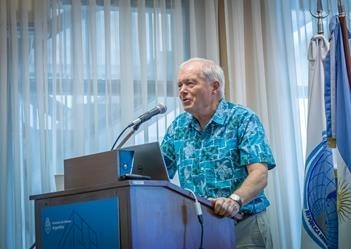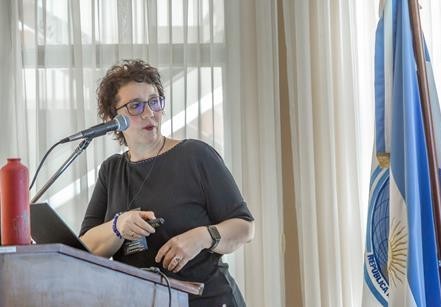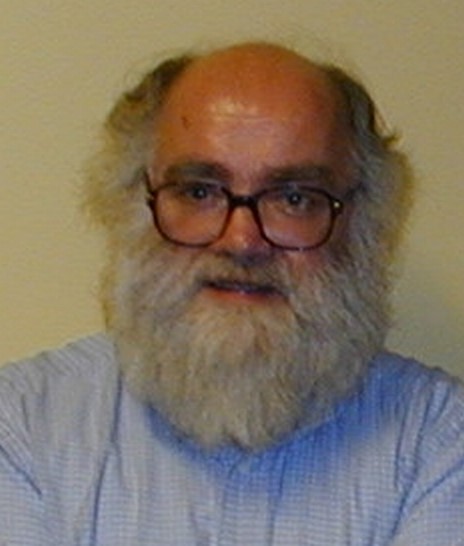December 2023
General Announcements
- Call for Nominations: GGOS, Director of the Bureau of Networks and Observations
Highlight Paper
- Gravitational Constraints on the Earth's Inner Core Differential Rotation
Meetings Calendar
IAG Sponsored Meetings
- IVS 13th General Meeting and 25th Anniversary
- 20th Geodynamics and Earth Tides Symposium (G-ETS 2024)
- Gravity, Geoid and Height Systems 2024
- GGOS Days and GGOS Focus Areas Topical Meeting
- IAG Scientific Assembly 2025
Geodesy Related Meetings
- Recent Achievements and Future Perspectives in Geodesy
- EGU General Assembly 2024
- ION Pacific PNT Conference
- FIG Working Week 2024
- Japan Geoscience Union Meeting 2024
- 34th Conference on Mathematical Geophysics
- 18th Symposium of SEDI
- 45th COSPAR Scientific Assembly
- 32th IAU General Assembly
- 2024 European Polar Science Week conference
Reports
- 14th International School on “The Determination and Use of the Geoid”
Obituary
- Hilaire Legros (1941-2023)
General Announcements
Call for Nominations: Director of the Bureau of Networks and Observations

Dear Colleagues,
GGOS is seeking nominations for the position of Director of the GGOS Bureau of Networks and Observations (GGOS-BNO). The outgoing Director, Michael Pearlman, will be stepping down once we have a new GGOS-BNO Director. So, this is your opportunity to take on this important leadership role!
GGOS-BNO is responsible for devising a strategy for the sustainable design, integration, and maintenance of the fundamental geodetic infrastructure to meet the long-term requirements for the realisation of a high-precision global geodetic frame of reference. Emphasis is placed on maintaining the necessary infrastructure to sustain the evolving global reference frames, while ensuring wider support for the scientific applications of the collected data. The GGOS-BNO Director plays a crucial role in ensuring efficient communication and collaboration among the various IAG Services and stakeholders concerned with deploying and maintaining ground and space-based geodetic infrastructure. Key responsibilities include coordinating and addressing requirements and challenges encountered by the IAG Services in an integrated manner. The activities managed by the GGOS-BNO Director encompass in particular:
- Advocating and encouraging expansion and upgrade of the global geodetic network of reference for the maintenance and improvement of the International Terrestrial Reference Frame (ITRF), the International Terrestrial Gravity Reference Frame (ITGRF) and the International Height Reference Frame (IHRF).
- Promoting broad participation of geometric and non-geometric Services in GGOS.
- Encouraging formation of partnerships to build and upgrade the network infrastructure, in particular the installation of new geodetic core sites in regions with poor coverage.
- Providing the opportunity for representatives of the IAG Services and associated GGOS-BNO Committees and Working Groups to meet and share progress and plans and discuss issues of common interest through the organisation of GGOS-BNO virtual meetings and at major international conferences such as EGU, AGU and the GGOS Days.
- Scoping of the required network and project network status in the future (5 and 10 years ahead) based on input from the stations and Services to anticipate data product quality for the ITRF, ITGRF and IHRF.
- Working with the UN Global Geodetic Centre of Excellence (UN-GGCE) as well as the UN Committee of Experts on Global Geospatial Information Management (UN GGIM) and its affiliates to develop a plan for the improvement of the global geodetic reference networks to satisfy the accuracy requirements for the monitoring of the Earth System: an accuracy of 1 mm and a stability at a level of 0.1 mm/year.
- Presenting talks and posters about the GGOS-BNO at major international conferences such as AGU, EGU, IAG, JpGU-AGU, AOGS, etc. with the aim of promoting awareness of GGOS amongst the scientific community.
- Write letters to support stations and analysis and research groups.
For the successful implementation of these activities, the GGOS-BNO Director is supported by a robust organisational structure comprised of representatives from all IAG Services, three Committees including Performance Simulations and Architectural Trade-Offs (PLATO), Satellite Missions and Data and Information Systems, and the Working Group Site Survey and Co-location (together with the International Earth Rotation and Reference Systems – IERS). For further insights regarding GGOS-BNO, please consult the latest terms of reference included in the attached document.
The Nomination Committee is composed of Michael Pearlman, Director of the GGOS-BNO, Detlef Angermann, Director of the GGOS Bureau of Products and Standards (GGOS-BPS), and Laura Sánchez, President of GGOS.
Qualifications: Applications are open to anyone currently involved in any of the IAG Services or Service Products. Knowledge of the work dynamics within the IAG is desirable.
Nomination Process: If you know of a qualified colleague or wish to nominate yourself for the position, please submit the following information to the GGOS Coordinating Office (co@ggos.org), by January 26, 2024:
1. Full Name
2. Contact Information
3. Brief Biography
4. Statement of Interest
5. Letter of support from employer (agency, university, institute, etc.) indicating that the candidate will be able to perform the duties, commitments, roles and responsibilities outlined in this call for nomination.
Selection Process: Nominations will be considered by the Nomination Committee, which will seek additional information from candidates as necessary. This Committee will rank the candidates in order of preference and submit the application to the GGOS Governing Board, whose members will vote to approve the new Director. Once a decision has been made, the selected colleague will be informed. Michael Pearlman plans to remain on the GGOS-BNO and will work with the new Director to help with the transition.
Timeline:
- Call for Nominations: December 13, 2023
- Deadline for Nominations: January 26, 2024
- Selection Process: February 15, 2024
If you know of a qualified colleague or wish to nominate yourself for the position, we encourage all eligible colleagues to consider this important leadership opportunity. Your involvement will contribute to the success and growth of GGOS.
Thank you for your support.
Sincerely,
Michael Pearlman, Detlef Angermann, Laura Sánchez
Further Information: https://ggos.org/news/nomination-call-director-bno/
Highlight Paper
Gravitational Constraints on the Earth's Inner Core Differential Rotation
Reference:
Lecomte, H., Rosat, S., Mandea, M., & Dumberry, M. (2023). Gravitational constraints on the Earth's inner core differential rotation. Geophysical Research Letters, 50, e2023GL104790. https://doi.org/10.1029/2023GL104790
Lecomte, H., Rosat, S., Mandea, M., Dumberry, M.
Meetings Calendar
IAG Sponsored Meetings
- IVS 13th General Meeting and 25th Anniversary, March 4-8, 2024, Tsukuba, Japan
URL: https://www.youtube.com/watch?v=mQkA8VHKWD4 - 20th Geodynamics and Earth Tides Symposium (G-ETS 2024), August 25-30, 2024, Strasbourg, France
URL: https://g-ets2024.sciencesconf.org/ - Gravity, Geoid and Height Systems 2024, August 26 – 29, 2024, Thessaloniki, Greece
URL: https://www.gghs2024.com/ - GGOS Days 2024 and GGOS Focus Areas Topical Meeting, October 7-11, 2024, Potsdam, Germany
URL: https://ggos.org/event/ggos-days-fa-meeting-2024/ - IAG Scientific Assembly 2025, September 1 – 5, 2025, Rimini, Italy
URL: https://www.iag-aig.org/events/107
Geodesy Related Meetings
- Recent Achievements and Future Perspectives in Geodesy, February 21-22, 2024, Potsdam, Germany
URL: https://leibnizsozietaet.de/wp-content/uploads/2023/09/Colloquium_in_honor_of_Harald_Schuh-save-the-date.pdf - EGU General Assembly 2024, April 14 – 19, 2024, Vienna, Austria
URL: https://www.egu24.eu/ - ION Pacific PNT Conference, April 15-18, 2024, Honolulu, Hawaii
URL: https://www.ion.org/pnt/index.cfm - FIG Working Week, May 19-24, 2024, Accra, Ghana
URL:https://www.fig.net/fig2024/index.htm - Japan Geoscience Union Meeting 2024, may 26-31, 2024, Chiba, Japan
URL: https://www.jpgu.org/meeting_e2024/ - 34th Conference on Mathematical Geophysics, June 2 - 7, 2024, Bombay, Mumbai, India
URL: https://www.cmg2024.org - 18th Symposium of SEDI, June 23 – 28, 2024, Great Barrington, MA, USA
URL: https://sedi-conference-2024-2675c.ingress-baronn.ewp.live/ - 45th COSPAR Scientific Assembly, July 13-21, 2024, Busan, Korea
URL: https://www.cospar2024.org/ - 32th IAU General Assembly, August 6-15, 2024, Cape Town, South Africa
URL: https://astronomy2024.org/ - 2024 European Polar Science Week conference, September 3 – 6, 2024, Copenhagen, Denmark
URL: https://www.europeanpolarboard.org/news-events/events/event/events/2024-european-polar-science-week-conference/
Reports
14th International School on “The Determination and Use of the Geoid”
November 13 - 17, 2023, National Geographic Institute, Buenos Aires, Argentina
Faculty
- Prof. Fernando Sanso mentor y creator of the International School on “The Determination and Use of the Geoid” (Politecnico di Milano, Italy) (virtual)
- Prof. Riccardo Barzaghi (Politecnico di Milano, Italy) (in person).
- Prof. Nikos Pavlis (National Geospatial Intelligence Agency, (In person).
- Prof. Rene Forsberg (National Space Insitut, DTU, Denmark). (In person).
- Prof. Laura Sánchez (DGFI-TUM), Germany. (In person).
Organizing Committee
- Surveyor Eng. Sergio Cimbaro (President Instituto Geográfico Nacional, Argentina)
- Cnel. Gustavo Caubarrère (President SIRGAS)
- Dra. Daniela Carrion ISG, Politecnico di Milano, Italy)
- Dr. Mirko Reguzzoni (ISG, Politecnico di Milano, Italy)
- Dr. Gabriel Guimarães (Universidade Federal de Uberlândia, Brazil)
- Dra. Claudia Tocho (National University of La Plata, Argentina)
- Surveyor Eng. Hernán Guagni (Instituto Geográfico Nacional, Argentina)
- Cabo. 2ª Laura Camacho (SIRGAS)
- Surveyor Eng. Mariana Eiko (Universidade Federal de Uberlândia, Brazil)
Participants
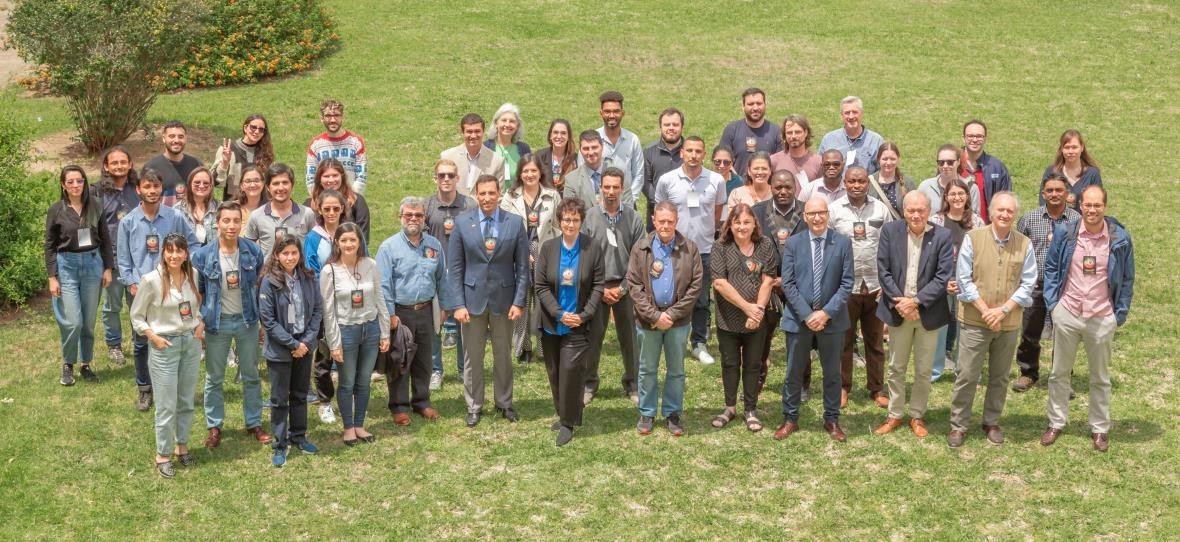
Venue
Instituto Geográfico Nacional
Avda.Cabildo 381 C1426 - Ciudad Autónoma de Buenos Aires. República Argentina
Distributed documents
Presentations, software, data for exercises, and GRAVSOFT manual were distributed to the students. Each student received a participation certificate.
Technical Visit
A visit to the Argentine-German Geodetic Observatory (AGGO) was realized on Friday. The Argentinean–German Geodetic Observatory (AGGO) is a fundamental geodetic observatory located close to the city of La Plata, Argentina, where all major geodetic techniques are co-located.
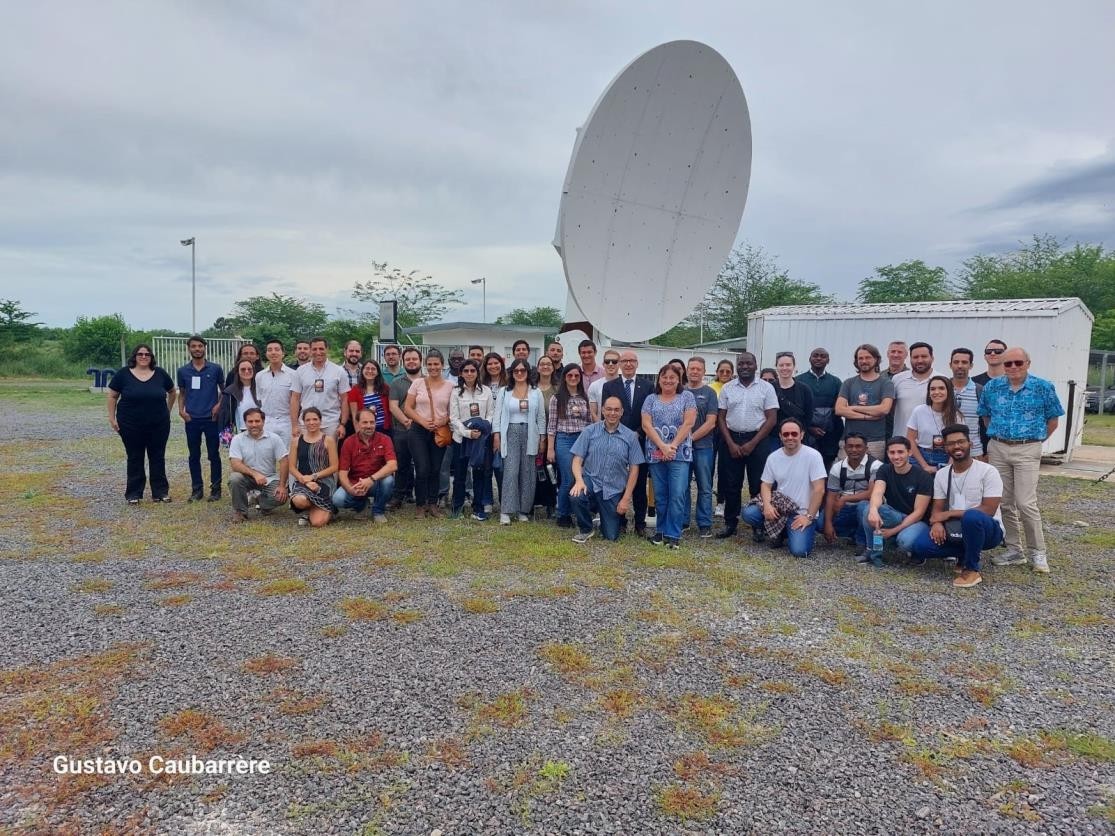
Feedback questionnaire
A satisfaction questionnaire has been filled up. These results are depicted in the following figures.
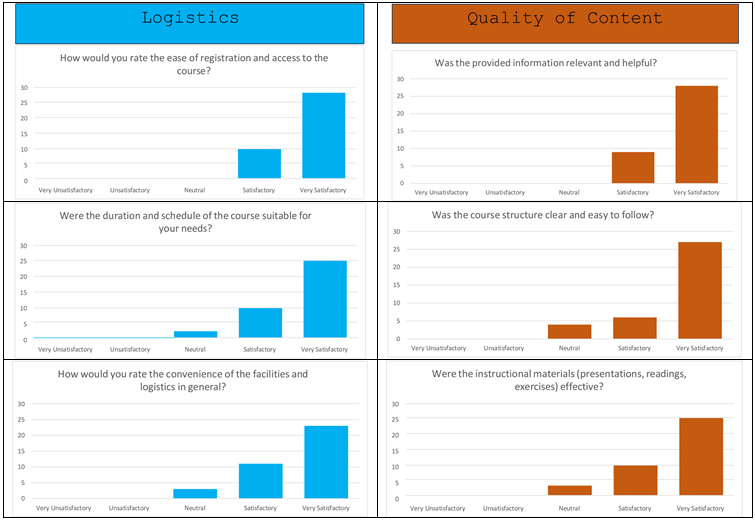
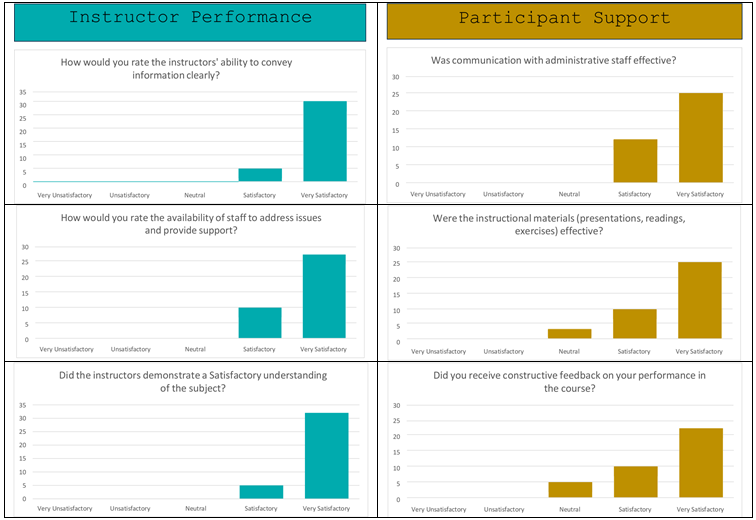
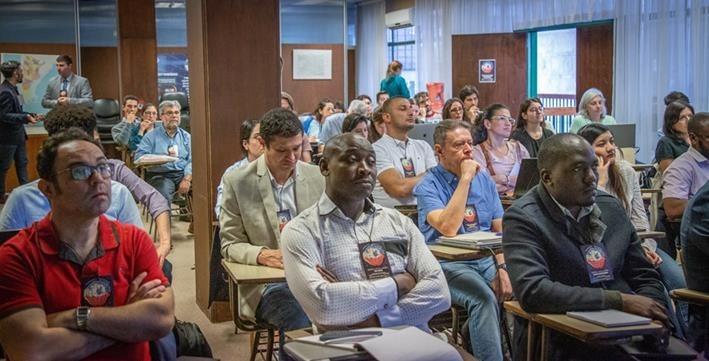
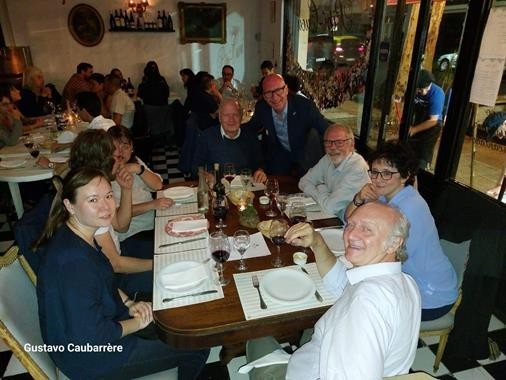
For more information, visit the web page: https://sirgas.ipgh.org/escuela-geoide/
Obituary
Hilaire Legros (1941-2023)
The IAG Newsletter is under the editorial responsibility of the Communication and Outreach Branch (COB) of the IAG. It is an open forum and contributors are welcome to send material (preferably in electronic form) to the IAG COB (newsletter@iag-aig.org). These contributions should complement information sent by IAG officials or by IAG symposia organizers (reports and announcements). The IAG Newsletter is published monthly. It is available in different formats from the IAG new internet site: http://www.iag-aig.org.
Each IAG Newsletter includes several of the following topics:
- news from the Bureau Members
- general information
- reports of IAG symposia
- reports by commissions, special commissions or study groups
- symposia announcements
- book reviews
- fast bibliography
| DOCUMENTS |
| IAG_Newsletter_December_2023.pdf |


 where
where  is the Love number accounting for the additional gravity signal resulting from global elastic deformations, Ri and R are the inner core and Earth’s radii, M the Earth’s mass and δρicb is the density jump at the inner core boundary (ICB).
is the Love number accounting for the additional gravity signal resulting from global elastic deformations, Ri and R are the inner core and Earth’s radii, M the Earth’s mass and δρicb is the density jump at the inner core boundary (ICB). 
